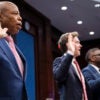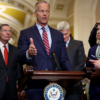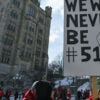
As baseball season rapidly approaches, we are reminded that between 1990 and today 18 cities have put up government money to help build new stadiums for their baseball teams. All of these government expenditures were justified on the exact same theory that the stimulus bill was: that government spending creates a multiplier effect that makes the taxpayer investment worth it. That tactic clicks every time, just as it did with the stimulus bill.
But there’s no evidence that using public money to build stadiums is a sensible economic strategy. A 2006 survey of Ph.D. economists in the American Economic Association reports that 85 percent agree that government subsidies to professional sports franchises ought to be eliminated. One critic spoke for hundreds:
The Daily Signal depends on the support of readers like you. Donate now
I have been studying and writing about publicly financed stadiums for more than 10 years and cannot name a single stadium project that has delivered on its original grandiose economic promises, although they do bring benefits to team owners, sports leagues and sometimes players.
The reason why was explained over a century ago by Frederic Bastiat in his famous essay “What Is Seen and What Is Not Seen”: the money that is taxed away to build the stadium would have been spent in some other way. The same is true of the money that consumers spend at the game. Publicly-funded stadiums inefficiently transfer spending from one place to another: they don’t increase the total amount of spending.
The new Yankee Stadium has cost about $1.6 billion. Even at the headline price, the stimulus bill would buy 500 Yankee Stadiums. But ‘build it and they will come’ makes as little sense nationally as it does locally: it’s just the same error on a bigger scale, with a wider range of projects that create more perverse incentives. Hope’s great in baseball, but in stadiums and stimulus bills, it represents a triumph over experience.





























